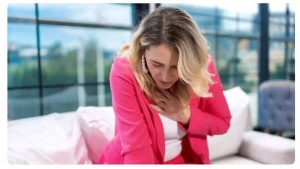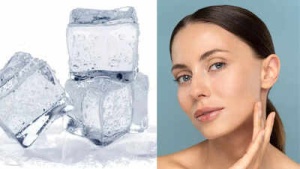Who could have guessed that our legs could be a significant indicator of what is going inside the body. They are our body’s silent messengers sending signals in uncomfortable ways such as swelling, sudden cramps, bruises, which at first, might seem harmless, but are potentially hidden health indicators. If we pay close attention to what our legs are signaling, it can uncover some essential insights and help catch health issues before they become serious. Here are 5 such symptoms

If one suffers from recurring leg cramps, it is a clear indication of dehydration or a lack of vitamin B12. It often points towards poor blood circulation or nerve issues. Leg cramps are when our muscles contract involuntarily, causing a deep, sudden pain, which usually happens to the best of us at night. Addressing these concerns early improves muscle function and overall leg comfort.
What to do: Vitamin B12 is one of the most vital nutrients our body needs. It helps boost metabolism and strengthen the immune system in our body. To increase B12 in our bodies, one can consume foods such as fish, milk, yogurt, eggs, and fortified cereals.

The veins that are marked by fat deposits push through weakened connective tissues beneath the skin. This can give the skin a dimpled, “peeled” like texture. Now, factors such as aging, weight changes (gaining or losing weight) can be an indicator of visible cellulite. What one can do is strength training and eat foods that are rich in citric acid, which is known to improve elasticity in the body.
What to consume: Leafy greens, citrus fruits, and foods that are rich in beta-carotene such as carrots and sweet potatoes.

Restless legs at night are often associated with iron deficiency. The uncomfortable urge to move the legs, even while resting, can interfere with sleep and its patterns. Now, we all know the crucial role iron plays in our bodies, such as improving nerve and muscle functions; imagine if it is not adequate in our bodies. Iron also contributes to the production of dopamine, a chemical that is known to help and control muscle movements.
What to consume: Eat iron-rich foods such as dates, beetroot, spinach, ragi, and even dry fruits (Especially raisins and apricots)

This might come as a surprise but the Vitamin K deficiency could be the reason why many get bruises easily on their legs and/or do not heal fast enough. Vitamin K not known by many, plays a crucial role in blood clotting, and a deficiency can result in a higher risk of bruising. According to Harvard.edu, "Vitamin K helps to make four of the 13 proteins needed for blood clotting, which stops wounds from continuously bleeding so they can heal."When vitamin K levels are low, the blood clotting process is compromised, leading to increased bleeding and bruising. This deficiency usually affects individuals with poor dietary habits, malabsorption issues or specific medical conditions.
What to consume: Green leafy vegetables (spinach, broccoli, cabbage ), soybean, canola oil, meat but in moderation and eggs

These veins are twisted, enlarged veins and can happen anywhere in the body. Most commonly seen on legs, this condition may lead to severe discomfort while walking and sitting. It is said that varicose veins are more common in some families that is, it might be inherited. Its most common symptoms include: Swelling around the ankles, itching or burning near the veins. Pain and heaviness in legs
What to consume: Since food is not the entire cure for varicose veins, certain nutrients present in these foods items can support blood flow, strengthen vessels and reduce inflammation altogether. Foods such as Apples, buckwheat, cherries and whole grains. Other items that contain citric acid such as orange, lemon and bell peppers are also beneficial.
Newer articles
Older articles
 Daren Sammy Fined, Handed Demerit Point for Umpire Criticism After Test Match Comments
Daren Sammy Fined, Handed Demerit Point for Umpire Criticism After Test Match Comments
 Gavaskar Calls for Yadav's Inclusion, Questions Middle Order After India's Test Defeat
Gavaskar Calls for Yadav's Inclusion, Questions Middle Order After India's Test Defeat
 Decoding Your Health: Spotting 5 Prediabetes Warning Signs Before a Blood Test
Decoding Your Health: Spotting 5 Prediabetes Warning Signs Before a Blood Test
 X Corp. Cracks Down: Half a Million Indian Accounts Suspended for Policy Breaches
X Corp. Cracks Down: Half a Million Indian Accounts Suspended for Policy Breaches
 Headline:
Early Warning Signs: 5 Heart Attack Symptoms to Watch Out For Weeks in Advance
Headline:
Early Warning Signs: 5 Heart Attack Symptoms to Watch Out For Weeks in Advance
 Facial Icing: Benefits, Risks, and Safe Application of This Viral Beauty Trend
Facial Icing: Benefits, Risks, and Safe Application of This Viral Beauty Trend
 Chess Sensation Praggnanandhaa Joins Magnus Carlsen's Team Liquid for Esports World Cup
Chess Sensation Praggnanandhaa Joins Magnus Carlsen's Team Liquid for Esports World Cup
 Mastering JPG to PDF Conversion: A Graphic Designer's Guide to Quality and Efficiency
Mastering JPG to PDF Conversion: A Graphic Designer's Guide to Quality and Efficiency
 MI New York's Tajinder Dhillon Shines: From IPL Benchwarmer to MLC Star
MI New York's Tajinder Dhillon Shines: From IPL Benchwarmer to MLC Star
 Akmal Blasts PCB's Interim Coach Choice: Ex-Cricketer Questions Logic Behind Mahmood Appointment
Akmal Blasts PCB's Interim Coach Choice: Ex-Cricketer Questions Logic Behind Mahmood Appointment